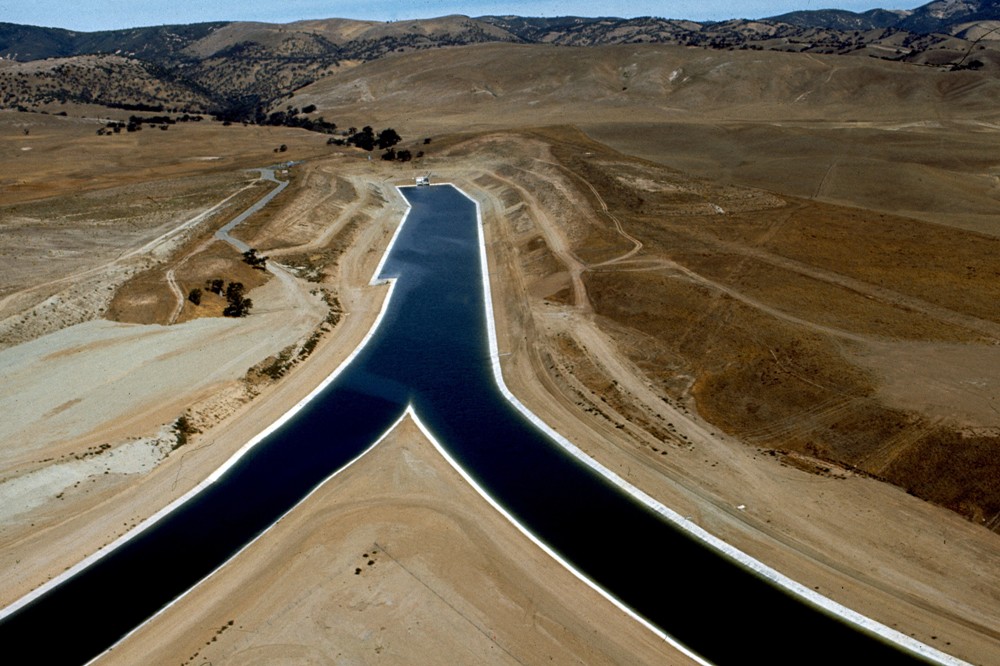‘Deadly’ Consequences If Stagnant Water in Shuttered Buildings Is Not Properly Addressed
Plumbing experts say that a united effort is required to educate building owners about the potential health risks in their water systems.

Buildings in large portions of New York City’s commercial and financial districts are essentially vacant during the coronavirus pandemic. Photo © J. Carl Ganter/Circle of Blue
By Brett Walton, Circle of Blue
The extensive closure of offices, hotels, restaurants and other commercial buildings in response to the coronavirus pandemic is a potential health hazard once those structures are reopened to the public.
Of greatest concern to plumbing and water quality experts is Legionnaires’ disease, a respiratory infection that is the deadliest waterborne illness in the United States.
Legionnaires’ is spread by inhaling airborne droplets that carry Legionella bacteria, a pathogen that flourishes in the tepid, stagnant water that can be found in the nooks and crannies of building plumbing, especially in buildings that have sat idle for several months.
With entire commercial districts vacant, these buildings are an unprecedented and unquantifiable health risk, according to water quality experts, including the plumbing consultant Tim Keane.
Keane, a nationally recognized authority on plumbing systems, was previously summoned to investigate deadly Legionnaires’ disease outbreaks in Flint, Michigan, and at Quincy Veterans Home, in Illinois. In each of those outbreaks, scores of people were sickened. At Quincy, at least 13 people died from the pneumonia-like illness.
“There will be outbreaks after Covid, there’s absolutely no doubt about it,” Keane told Circle of Blue. “There will be more outbreaks — Legionnaires’ disease outbreaks — after Covid than we typically have in a year.” There were 9,933 reported Legionnaires’ cases in 2018, but the true number, accounting for those who are undiagnosed or misdiagnosed, could be five to seven times higher.
“Is it going to be ten times more?” Keane wondered. “A hundred times more? A thousand times more? Who knows? But there are going to be a lot of outbreaks. And how many of them will be Quincys and Flints?”
Keane said that if owners are not careful as they reopen buildings, stagnant water will expose deficiencies in poorly managed plumbing systems that could trigger a Legionnaires’ outbreak.
“This shutdown will take something that was standing on the edge and push it over,” he warned.
Misguidance
Keane is particularly concerned about guidance published by the Centers for Disease Control and Prevention for reopening buildings that were closed during the Covid-19 shutdown.
The CDC document makes at least one critical error: it recommends setting the temperature of water heaters above 120 degrees Fahrenheit — a level that is within the bacteria’s growth range.
“The CDC document — that’s deadly,” Keane said.
When contacted by Circle of Blue, the CDC acknowledged that the Covid-19 guidance was not in line with industry best practices and with the agency’s own recommendations published in documents unrelated to the Covid-19 pandemic.
Donnica Smalls, a CDC spokesperson, said the agency would update the Covid-19 guidance to reflect that water heaters should be set at or above 140 degrees.
U.S. Environmental Protection Agency guidance for reopening buildings after Covid-19 shutdowns refers to the CDC document and repeats the 120 degree number for water heaters.
Much is known about the conditions under which the bacteria grow. A National Academies of Sciences, Engineering, and Medicine report published last August recommended that water heaters in all buildings be kept above 140 degrees. The CDC uses the same number in its infection control guidelines for healthcare facilities, a document that was first published in 2003 and updated last year.
Legionella are most comfortable between 100 and 110 degrees, when their growth potential is highest. Even though the risk is much lower at 120 degrees, the bacteria do still grow, the National Academies report stated. The bacteria become airborne in the spray from showers, cooling towers, fountains, hot tubs, and faucets.
The CDC’s Covid-19 document says that the growth range for Legionella is between 77 degrees and 108 degrees. But Legionella can grow and survive at temperatures slightly above and below this range, just at a slower rate.
“It appears to me that a cursory read of that piece of information might lead someone to assume that if you’re above 108 degrees Fahrenheit then you’re out of the growth range of Legionella, which is absolutely not the case,” William Rhoads, a research scientist at Virginia Tech who studies plumbing systems, told Circle of Blue.
Uncharted Waters
Accurate guidance is necessary because the circumstances are unprecedented, according to Charles Haas, a professor of environmental engineering at Drexel University and a member of the National Academies’ Legionella panel.
Building shutdowns lasting weeks or months are not new. Hotels close for renovations. Schools see much less activity during summer recess. Resorts empty out during the off-season. But those are individual structures and isolated cases, often with established plans for reopening. Never before have so many buildings across entire city districts been vacant for so long.
The scale of the shutdowns introduces new risks.
“We know that Legionella is often in the water that is entering our buildings,” Rhoads said. The bacteria occur naturally in rivers and lakes, but they do not become a problem until they take root in building plumbing and multiply under the right conditions. Disinfectants that utilities add to drinking water kill the bacteria, but the disinfectants degrade in a matter of days or weeks. “The unknown here is that we just don’t know how prevalent [the bacteria] are going to be after so long.”
Outside of the healthcare industry, very few building owners keep close watch over water quality within their walls. Widespread ignorance going into the pandemic lockdown means a greater educational burden coming out of it.
“I think a lot of the building owners may simply not know what they don’t know,” Haas said. When he discussed water quality in idled buildings three weeks ago with Drexel’s facility maintenance staff, the issue “was not on their radar screen at all.”
Haas says that raising awareness of the health hazards and disseminating reliable information needs to be a unified effort. Water utilities, industry groups, public health departments, and even building insurers, which could see an increase in claims if disease burdens rise, play a role.
To see what previous research had found about building closures, Haas dispatched a student to review the academic literature. Nearly all of the studies looked at water stagnation for a maximum of two weeks.
“What happens during these prolonged shutdowns?” Haas said, posing a question about building water quality that, at this point, has no clear answer. “We’re in uncharted waters.”
Flushing from the Bottom Up
Changes in pressure can dislodge bacteria that grow on the inside of pipes, as well as lead if the pipes have corroded.
Think of the building plumbing system like a tube of toothpaste. To empty the tube you have to start squeezing at the end. Start in the middle or near the top, and there will be residual paste. Same with a water system. You start flushing where the water enters the building from the city main, then you work your way to the farthest outlets. That way there is no bacteria-laden water at the bottom of the tube, so to speak, that can circulate when the building is reopened.
The shutdown of entire city districts complicates this procedure, Haas said. Because large clusters of buildings have had minimal occupancy since the middle of March, water has been sitting in the main lines for weeks and months. Disinfectant added to the water when it was initially treated will have already degraded. If this water gets into buildings, it could act as a nutritious broth that feeds the bacteria.
Haas said that another big unknown is what happens if all these empty commercial buildings decide to flush their systems at once, in anticipation of reopening.
“What is the aggregate impact on the utility and on the distribution system?” Haas wondered. “I’m not sure that has been thought about for a large utility.”
Imagine this scenario, Haas said. If many large buildings in one district flush their systems all at once, it would increase the velocity of water, which in turn could dislodge bacteria that had grown in the last two months within pipes. Freed from pipe walls, those bacteria could colonize the plumbing in buildings not being vigilant about their water.
Ideally, flushing would be coordinated: the utility would clear its mains and then signal to building owners in a district that they could begin staggering their flushing operations. EPA recommends this type of coordinated approach.
Getting the Word Out
Given the novelty of these circumstances, researchers at Purdue University, Virginia Tech, and other institutions are evaluating guidance documents published by state and federal agencies and industry groups. They’ve found that good guidance is no easy task, given the complexity of plumbing systems and the variety of buildings that are affected.
“It’s really hard to make succinct public health guidance on some of these topics,” Rhoads said.
Guidance exists on a spectrum, he explained. At one end are highly specific recommendations crafted for particular building types and plumbing complexities that describe precise flushing times, chlorination levels, testing protocols, and water chemistries. At the other, are generalizations about actions that should be done, but little information on how to do them. Specific guidance is narrow, with limited application. General guidance is vague and directionless.
“The drawback to not having specific recommendations is that people who are not extremely well versed in what to do are not provided practical information,” Rhoads said.
Keane criticized the CDC guidance in general for being “way below cursory.” It recommends that building owners develop a water management plan that adheres to industry standards. Keane said that asking owners to do this in the middle of the pandemic is backwards, like telling a person on an immobilized airplane to strap on a parachute when they weren’t provided with one. “It’s a little bit too late,” he said.
Of the state plans, both Keane and Rhoads praised the Washington Department of Health and the Ohio Department of Health. Rhoads’ goal in his review of guidance is to find “nuggets of gold” in these plans and fit them into a model plan that applies to certain building types and plumbing complexities.
Caitlin Proctor, a postdoctoral fellow at Purdue University, is also on the team that is reviewing guidance documents.
Proctor is heartened that state agencies are starting to ask researchers for advice when writing their guidance.
One improvement, she said, is that more documents are highlighting health risks for workers who are clearing the plumbing systems and could be exposed to contaminants in the first flush of water. CDC updated its guidance on May 7 to reflect risks to frontline workers.
“The situation is getting better,” Proctor wrote in an email. “Certainly better than it was 2 months ago when we first started on this project/effort to get the word out.”
This story has been updated to reflect that while Tim Keane investigated Legionnaires’ disease in Flint, it was not at McLaren Hospital, as was initially stated. Also, the growth range for Legionella has been clarified.
Brett writes about agriculture, energy, infrastructure, and the politics and economics of water in the United States. He also writes the Federal Water Tap, Circle of Blue’s weekly digest of U.S. government water news. He is the winner of two Society of Environmental Journalists reporting awards, one of the top honors in American environmental journalism: first place for explanatory reporting for a series on septic system pollution in the United States(2016) and third place for beat reporting in a small market (2014). He received the Sierra Club’s Distinguished Service Award in 2018. Brett lives in Seattle, where he hikes the mountains and bakes pies. Contact Brett Walton












Thanks for raising yet another critical issue. Also traps in fixture drain systems are likely to go dry without use, particularly floor drains that no longer receive frequent wash water. May create conditions for sewer gas intrusion into unused facilities.
this is very informative
This article sheds light on the often overlooked issue of stagnant water in shuttered buildings and the potential health risks associated with it. It serves as an important reminder for building owners and managers to take proactive steps in addressing this problem to prevent the growth of harmful bacteria and ensure the safety of occupants. Thank you to the author for raising awareness about this issue and emphasizing the need for proper water management practices.
this blog is very infomative
I really wanted to thank you for this excellent article on water health issues. My extensive internet investigation has at the end of the day been recognized with awesome facts to talk about with my friends. I feel lucky to have come across the website and look forward to spend more excellent reading time here. Thanks a lot once again for all the details.
Thanks for the beautiful blog. I loved it.